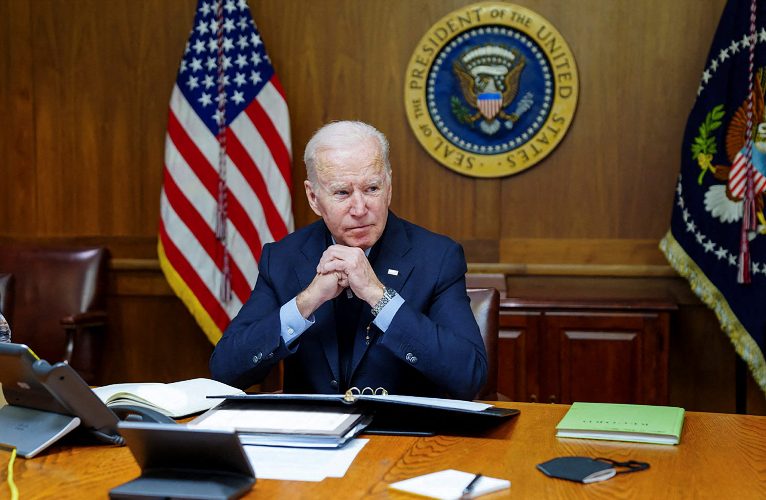
Biden’s Indo-Pacific strategy flips the switch on geopolitical rivalry
Amanda Trea Phua
Published:16 Mar 2022, 12:31 PM

Biden’s Indo-Pacific strategy flips the switch on geopolitical rivalry
Compared to the 2019 Indo-Pacific Strategy Report, the latest Indo-Pacific Strategy is noticeably succinct
On 11 February 2022, the Biden administration released its long-awaited Indo-Pacific Strategy against the backdrop of an impending security crisis in Europe. The document confirms what has been evident through the administration’s first year, marking a shift in focus to the region and a push to strengthen collective capacities with its allies and partners.
The document’s release, coupled with US Secretary of State Antony Blinken’s trip to the Pacific, aims to reassure regional states that the United States will not be distracted by competing priorities in Europe. Russia’s invasion of Ukraine on 24 February is now testing Washington’s focus and resolve amid these challenging times.
Compared to the 2019 Indo-Pacific Strategy Report, the latest Indo-Pacific Strategy is noticeably succinct. The 19-page document, compared to the 64-page report in 2019, highlights several key areas of concerns including climate change, global health and North Korea’s nuclear program.
But the most pressing matter is the state of the regional — and international — order, with China its biggest threat. As such, Washington’s priorities in the Indo-Pacific are portrayed in a manner that is not so much focussed on China as it is focussed on shaping the region’s security architecture. It explains that the US objective ‘is not to change the PRC’. Instead, it is to build a ‘balance of influence in the world that is maximally favourable to the United States, our allies and partners, and the interests and values that we share’. This is a much more tempered position from Washington, reflecting an intention to veer from geopolitical bipolarity with Beijing.
Over the last year, the Biden administration has taken steps to ensure that its Indo-Pacific policy eclipses its concerns about China. Compared to the previous administration, there is a significant shift away from asking partners and allies to align with Washington over Beijing. That US engagement in the region is not designed to make anyone ‘choose between countries’ was tirelessly repeated through separate high-key diplomatic trips made to the region. Instead, the assertion is now that US engagement is based on legacy rather than geopolitical contests, aiming to expand a wider network of like-minded countries.
This objective can be seen in the Biden administration’s response to regional anxieties over the US–China rivalry. Countries have made it expressly clear that they do not want to be forced to choose too starkly between Washington or Beijing, preferring instead to focus on regional stability. As such, by underscoring engagement and cooperation based on ‘shared agendas’ and ‘shared values’, the United States can frame its engagement in the Indo-Pacific beyond concerns about China.
As the strategy notes, perhaps in a self-aware manner, Asia has often been viewed too narrowly as an arena of geopolitical competition. By shifting the focus towards shared interests and prioritising alliances and partnerships, US policy in the region can expand beyond a narrowly framed binary of geopolitical interests.
The latest release of the US Indo-Pacific strategy is a clear nod to this. It asserts that the regional rules-based order is at stake, one in which ‘governments can make their own sovereign decisions, consistent with their obligations under international law’.
The report additionally acknowledges variations within outlooks espoused by key regional partners, reflecting an effort to present the congruence and confluence of an Indo-Pacific vision that is collectively shared. The call for collective efforts to safeguard the regional commons is resounding.
A closer look at the Indo-Pacific strategy reveals that much of the document is written in future tense. A search of the key words, ‘we will’, turns up 84 hits in the document. With the Biden administration only in its second year in office, the Indo-Pacific strategy will serve its purpose to shore up anticipation for sustained US engagement in the region. This is especially so as the region looks with interest at the forthcoming US Indo-Pacific economic framework.
At the same time, the next few months will be a critical period for Washington to prove that it can indeed walk the talk and demonstrate that it is serious about prioritising the region. So far, its efforts to keep attention on the Indo-Pacific while also contending with Russia’s aggression and a deepening security quagmire in Europe is commendable.
As the situation in Europe continues to develop, it remains to be seen if Washington will be able to find the energy and momentum it needs to make good on its promises to the region. But what is clear is that Indo-Pacific countries have been here before — and they will be waiting to see if the Biden administration will be able to deliver where previous administrations have failed.
* The article was first appeared on East Asia Forum